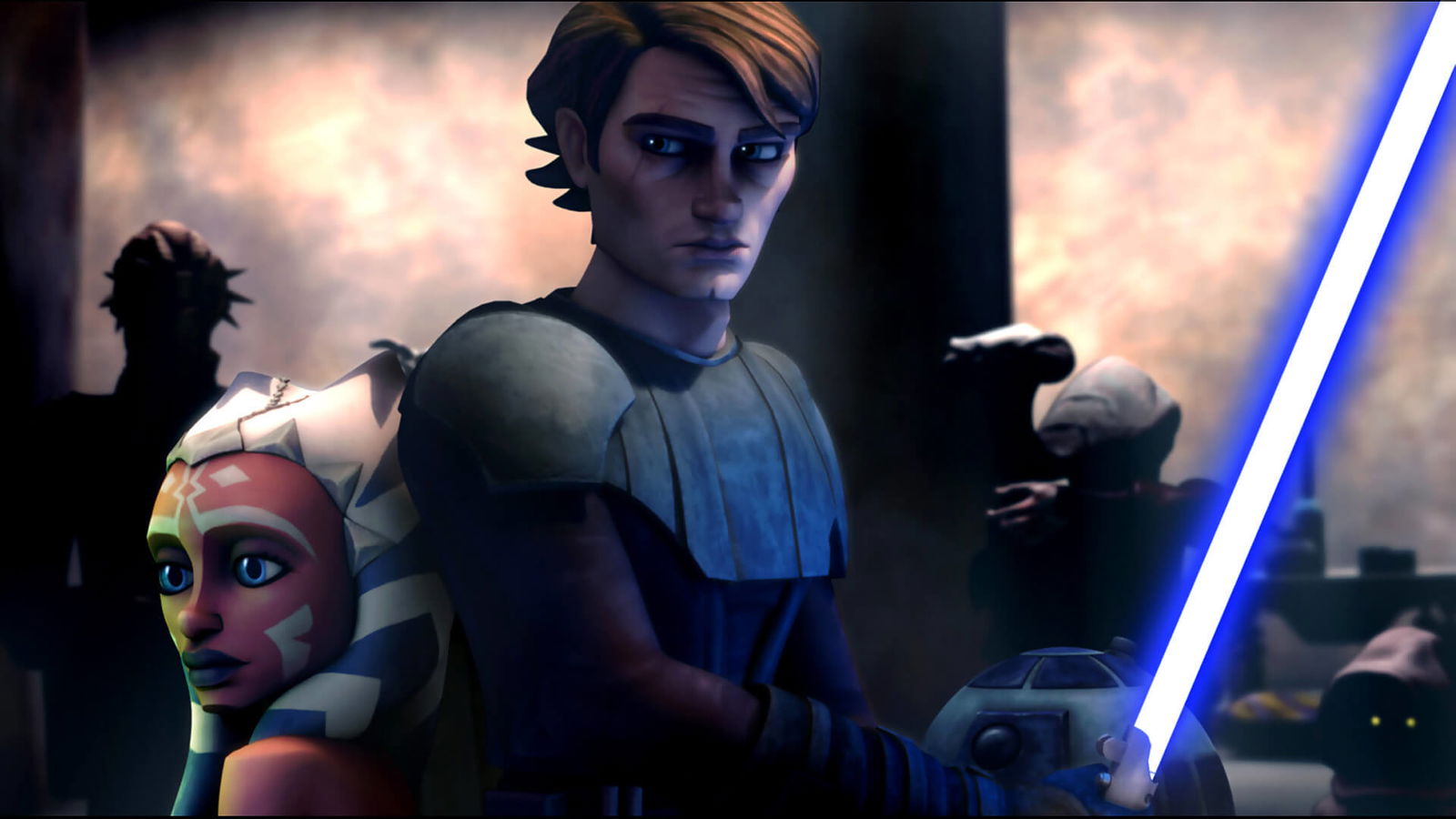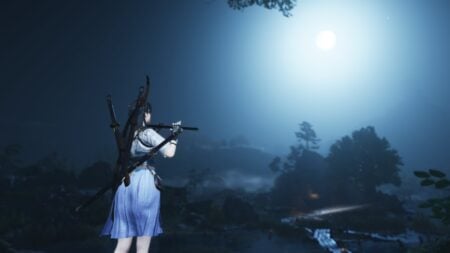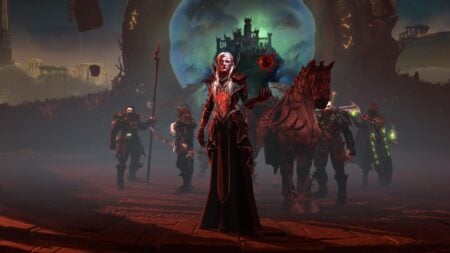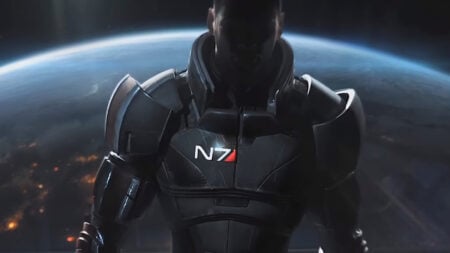Title: Star Wars: The Clone Wars – Season 1
Air Date: October 3rd 2008
Network: Disney/ Netflix
Genre: Military Science Fiction – Action/ Adventure
Star Wars celebration was a few weeks ago, but I’m still on the hype train. After announcements and teasers for both The Last Jedi and Star Wars Battlefront 2, I can’t wait to see what the franchise does next. I wouldn’t call myself a hard-core fan of the Star Wars brand. I’ve seen all the movies, I used to collect the toys, and I’ve played my fair share of video games. However, I recently decided to venture into the expanded universe of Star Wars, and see what it had to offer. Which brings me to this review. I recently watched the first season of Star Wars: The Clone Wars, an animated TV series that delves into the story between Episode 2, Attack of the Clones, and Episode 3, Revenge of the Sith. And overall I was pleasantly surprised. This isn’t a game changing, storytelling masterpiece. But rather interesting backstory to a previously unseen era of Star Wars.
Each episode of Star Wars: The Clone Wars is a short self-contained story. Often of a simple premise, they usually focus on a particular battle that took place during this era and the characters involved. You could almost liken this to Battlefield 1’s vignette style of storytelling. Individual character story’s, which paint a picture of a grander war when combined. So due to this, the story often jumps from one location or time period to another. One episode might focus on Anakin Skywalker leading a squadron of ships against a Separatist fleet, and the next is about Mace Windu attempting to end the occupation of Separatist’s forces on an otherwise peaceful planet. This approach is most likely targeted towards Clone Wars younger audience, who may not be able to keep their interest if the seasons 22 episodes were one interconnected story.

Despite finding every episode of the first season enjoyable, they fall into three categories. Repetitive, thoughtful and tacky. Because there is no greater story being told, many of the episodes become repetitive. A group of clones, led by one Jedi or another, will go into battle with the droid army. The clones, once acquiring the advice of the Jedi, will defeat the droids and briefly face off with one of the separatists many leaders. This formula is used throughout the season, with several episodes focusing on General Grievous being the main culprits. Several episodes in a row see Grievous facing off against the Republic, have his clearly superior forces wiped out, only for him to escape while his ship is destroyed. I know this show is supposed to draw in a younger demographic, but it’s also supposed to entice long-time fans. And after three times, in a row, this simple plot becomes a little yawn inducing.
However peppered throughout the season are some thoughtful episodes that probe interesting topics. Episode 14, “Defenders of Peace,” sees Anakin Skywalker, his padawan Ahsoka and several Clone Troopers crash land on an alien planet. The inhabitants known as the Lurmen are a peaceful race and want no part in the Separatist vs Republic war. However, things become complicated when the Separatists arrive, looking for the Jedi and hoping to test their new, life form destroying the weapon. The Lurmen’s leader would rather accept death than break their traditions of non-violence. While the youth of the village struggle with honoring their past and defending themselves in the now. Ahsoka also learns the difference between aiding those who don’t want your help and leaving them be. The episode deals with themes about culture, and the difficulty of choosing a side in a war you want no part in.
Although the series stars various protagonists, many episodes focus on the plights of clone troopers. Humanizing them in a way that the films never did. Another episode I found rather thought provoking was episode 16, “The Hidden Enemy.” Jedi Knight Anakin Skywalker and Jedi Master Obi-Wan Kenobi lead Republic forces in an attempt to defeat the droid armies and free the planet of Christophsis from the Separatist siege. When the Republic is ambushed and forced to retreat, it becomes clear that someone in their midst has set them up. The Jedi believe this infiltration is a Sith-backed operation and go behind enemy lines to investigate. Meanwhile, Captain Rex and Commander Cody set out to uncover the traitor amongst them. Although the episode is a typical who-done-it mystery, the traitorous clone’s reasoning is rather intriguing. All the clone wanted was freedom. Freedom for himself and his brothers. He claimed the Jedi and the Council used the clones as if they were nothing more than expendable slaves. His ideas are pushed aside by the Republic and his fellow clones who banish him. It makes us wonder, to what level are the clones brainwashed slaves. Do they have the same right to freedom that any other member of the galaxy would?

The broad range of characters in Star Wars: The Clone Wars is one of its highlights. There are recurring faces such as Anakin Skywalker, Obi-Wan Kenobi, General Grievous and Count Dooku. There are also much lesser known characters from the Star Wars universe, who are expanded upon. Jedi Masters Plo Koon, Luminara, and Kit Fisto just to name a few. It is in these lesser known characters that the most interesting stories arise. And the most intriguing character developments come from the newly introduced members of the Star Wars universe. Count Dooku’s apprentice Asajj Ventress and Anakin Skywalker’s apprentice Ahsoka are the highlights of the season. Both, equally formidable in their abilities, but lacking in their knowledge and experience. But of course, there are also characters we would rather see less of. Jar Jar Binks is the star of far too many episodes. Despite the outcry of annoyance fans showed after The Phantom Menace, somehow he has snuck into the Clone Wars with his irritating antics. Anakin Skywalker is also a controversial character. Although the Anakin portrayed in The Clone Wars is much more akin to the tactile general who is Darth Vader, we still see shades of the Hayden Christensen Anakin when he is around Padme. When with Padme, he is impulsive, thoughtless and overly clingy. An Anakin we want to try and forget from the prequel films.

The Clone Wars has its ups and downs as a TV show but overall succeeds in expanding the Star Wars universe. The art style is simplistic, the voice acting is great and the stories although not always riveting, tell an interesting story in the Clone Wars era. For other reviews check out our latest review of The Walking Dead Comics or our review of the Ubisoft game Zombi. For everything else on Star Wars, stay tuned to Thenerdstash.com.
[review]







